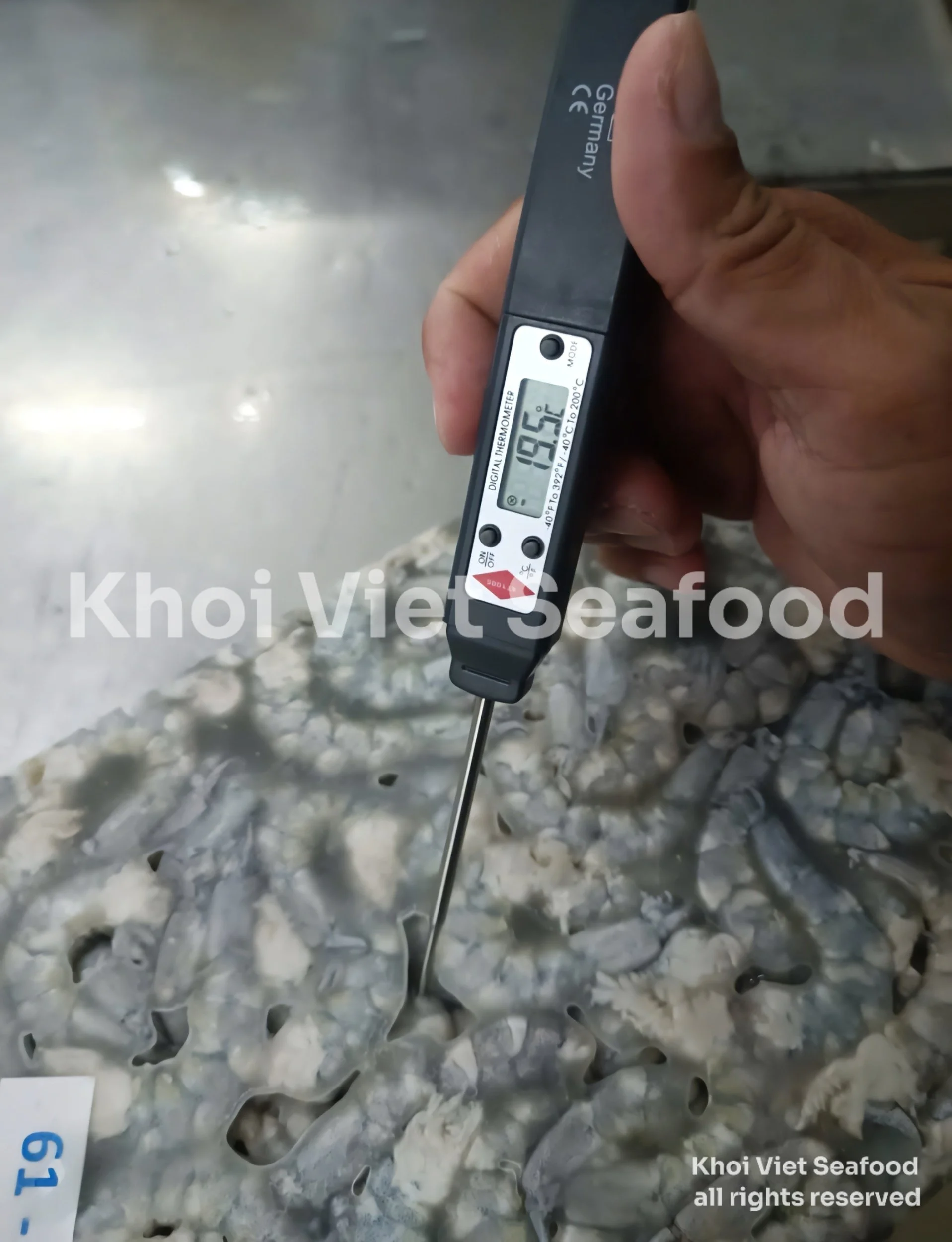Ensuring Quality: The Importance of Checking Frozen Shrimp Temperature Post-IQF or Block Freezing
In the seafood export industry, maintaining the quality of products such as shrimp is paramount. One crucial aspect of quality control is ensuring that frozen shrimp is stored and shipped at the optimal temperature. This is especially important after the shrimp has undergone Individual Quick Freezing (IQF) or block freezing processes.
Optimum Temperature for Frozen Shrimp:
The recommended temperature for storing and shipping frozen shrimp is -18°C or lower. Maintaining this temperature ensures that the shrimp remains in peak condition, preserving its texture, flavor, and safety for consumption. Any deviation from this temperature can lead to deterioration in quality, including changes in texture, loss of flavor, and the risk of bacterial growth.
A digital thermometer probe is being used to measure the internal temperature of the frozen shrimp. This device is an essential tool for seafood processors and exporters, providing an accurate reading of the shrimp's temperature. The digital display on the thermometer allows for easy monitoring, and the probe can penetrate the block of frozen shrimp to ensure the internal temperature is consistent with the surface temperature.
Why Regular Temperature Checks Are Crucial:
Quality Assurance:
Consistently monitoring the temperature of frozen shrimp ensures that the product remains within the safe storage range, preventing any quality degradation. This practice is particularly important before every shipment to guarantee that the shrimp reaches the customer in the best possible condition.
Compliance with Regulations:
Many countries have strict regulations regarding the storage and transport of frozen seafood. Regular temperature checks help ensure compliance with these regulations, reducing the risk of shipment rejections or penalties.
Prevention of Thawing and Refreezing:
Temperature fluctuations during storage or transport can cause the shrimp to thaw and then refreeze, leading to a loss of quality. Regular checks help identify any issues early, allowing corrective actions to be taken before the shrimp is shipped.
Customer Satisfaction:
By ensuring that shrimp is stored and shipped at the optimal temperature, exporters can maintain a high level of customer satisfaction. Customers are more likely to return for future purchases when they receive products that are fresh and of high quality.

